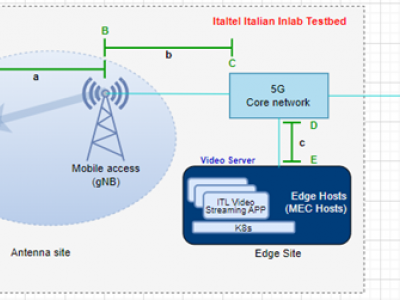Wireless Networking

This dataset has been collected from both User Equipment (UE) and Network sides. UE side metrics consist of radio metrics that have been merged with localization information from the modem. Network side metrics consist of network Key Performance Indicators (KPI).
The dataset contains both stationary and movement samples for different approaches. Beamforming information is available from the serving and up to 3 neighbouring beams.
- Categories:
 351 Views
351 Views
The dataset from the article "Polynomial-Complexity Deadlock Avoidance Policy for Tasks Offloading in Satellite Edge Computing with Data-Dependent Constraints" published in IEEE Transactions on Aerospace and Electronic Systems is compressed into a zip file. Once unzipped, it contains "*.pickle" files for use with Python, including the testing instances used in the article.
- Categories:
 47 Views
47 Views
In the evolving landscape of 5G network, network slicing has been considered as a key technology for the realization of multiple virtual networks running on a shared physical infrastructure, each designed to fulfill a specific service or application. However, with such networks, the dynamic and real-time allocation of these resources remains a prime concern, particularly with respect to highly variable conditions of traffic.
- Categories:
 220 Views
220 Views
Putting together software that lets patients make their appointments and software that helps them book appointments is making healthcare centres more accessible and useful. These systems put all of the appointment bookings in one place, so patients can make appointments across many areas and specialties. Standardizing the planning process for healthcare workers can help them save time and money by streamlining their work and lowering the costs of running their businesses.
- Categories:
 360 Views
360 Views
Along with the continuous growth of Internet usage, mobile users are becoming increasingly relevant as they are responsible for the largest percentage of web traffic. Conse- quently, a large and growing body of literature has been based on cellular data to gain a deeper understanding of several Internet-related concerns. Nevertheless, accessing high-quality cellular datasets can be a challenge for research teams due to scarcity and restricted access.
- Categories:
 227 Views
227 Views
The dataset provides an end-to-end (E2E) perspective of the performance of 360-video services over mobile networks. The data was collected using a network-in-a-box setup in conjunction with a Meta Quest 2 head-mounted display (HMD) and a customer premises equipment (CPE) to provide 5G connectivity to the glasses (WiFi-native).
- Categories:
 183 Views
183 Views
These datasets are low Earth orbit (LEO) satellite network topology datasets. We processed the publicly available datasets from https://celestrak.org/NORAD/elements/ using scripts to generate input files readable by our model. These files include well-known satellite constellations such as StarLink, Iridium, OneWeb, and GlobelStar, and can be used for analysis in related fields. These datasets can be used for availability analysis of LEO satellite network.
- Categories:
 692 Views
692 Views
This dataset contains results of the 60 GHz indoor sensing measurement campaign using a bistatic OFDM radar based on 5G-specified positioning reference signals (PRSs). The data can be used for testing end-to-end indoor millimeter-wave radio positioning as well as simultaneous localization and mapping (SLAM) algorithms, including channel parameter estimation. Beamformed PRS with dense angular sampling in transmission and reception allows efficient capture of line-of-sight (LoS) as well as multipath components.
- Categories:
 2087 Views
2087 ViewsThis Dataset provides input data for the development of the B-RAN and attacks models for the NANCY framework, to model training and model inference functions. The data collected plays the role of ML algorithm-specific data preparation. The dataset contains time-series, collected transmitting a video content through the Italtel "VTU - video streaming and transcoding application", that can convert audio and video streams from one format to another, at multiple encodings schemes, changing resolution, bitrate, and video parameters.
- Categories:
 284 Views
284 Views
Owing to the substantial bandwidth they offer, the exploration of 100+ GHz frequencies for wireless communications has surged in recent years. These sub-Terahertz channels are susceptible to blockage, which makes reflected paths crucial for seamless connectivity. However, at such high frequencies, reflections deviate from the known mirror-like specular behavior as the signal wavelength becomes comparable to the height perturbation at the surface of the reflectors.
- Categories:
 157 Views
157 Views